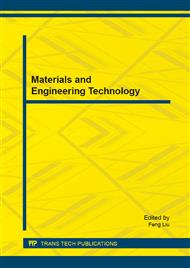[1]
Z. Y. Tang and L. He, Simulation research of counter-detection probability of submarine based on antisubmarine helicopter sonar detection, J. of Systems Simulation, 17 (2008) 4751-4755.
Google Scholar
[2]
X. Q. Gao, R. J. Yang, X. An and C. Y. Yang, Simulation research on submarine evasion to fight against dipped sonar searching, J. of Test and Measurement Technology, 1(2009)14-18.
Google Scholar
[3]
W. D. Hillis, Coevolving parasites improve simulated evolution as an optimization procedure, in: Artificial Life II, Redwood City, CA: Addison-Wesley, 1992, pp.313-324.
Google Scholar
[4]
G. F. Miller and D. Cliff, Co-evolution of pursuit and evasionⅠ: biological and game-theoretic foundations, Technical Report CSRP311, Aug. (1994).
Google Scholar
[5]
M. J. Tahk and B. C. Sun, Co-evolutionary augmented Lagrangian methods for constrained optimization, IEEE Transactions on Evolutionary Computation, 2(2000) 114-124.
DOI: 10.1109/4235.850652
Google Scholar
[6]
H. L. Choi, H. C. Bang, M. J. Tahk, Co-evolutionary optimization of three-dimensional target evasive maneuver against a proportionally guided missile, in: Proc. of the Congress on Evolutionary Computation, 2001, vol. 2, pp.1406-1413.
DOI: 10.1109/cec.2001.934356
Google Scholar
[7]
Z. H. Guan, J. S. Kou and M. Q. Li, A coevolutionary algorithm based on -constraint and augmented Lagrangian methods, J. of Systems Engineering and Electronics, 9(2002) 33-37.
Google Scholar
[8]
F. Li, S. M. Guo, L. J. Wang, Q. Y. Liu, A new approach to prediction of sonar detection range index, Acoustic Technology, 3(2009) 235-239.
Google Scholar
[9]
X. Q. Gao and R. J. Yang, Correction of empirical formula for the source level of submarine radiated noise, Acoustics and Electronics Engineering, 3(2007) 17-18.
Google Scholar
[10]
C. D. Rosin, R. K. Belew, New methods for competitive coevolution, Evolutionary Computation, 1(1997) 1-29.
DOI: 10.1162/evco.1997.5.1.1
Google Scholar
[11]
P. Jiang, Adversarial problems solving based on competitive co-evolutionary genetic algorithms, Doctoral Thesis: Hefei University of Technology, (2000).
Google Scholar
[12]
Y. C. Chen and H Qi, Co-evolutionary pursuit-evasion game on a plane, J. of Control and Decision, 3(2009) 383-387.
Google Scholar


